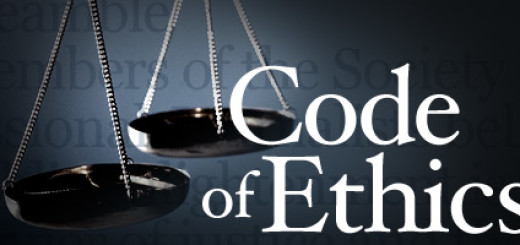Winter of discontent

Dr. Roshan Bhakta Bhandari
However, the long-term recovery of disaster victims has still been a huge challenge. People at the local level supported each other in the short run, but with dwindling resources and funds, long-term recovery is becoming a humongous task. Lack of government policy interventions for long-term recovery is gradually building community risks particularly in relation to the most vulnerable – the children, women and elderly. The worst case scenario may result in a major loss of human lives. Who should be accountable should this terrible situation emerge? Of course, the government and their counterparts that are responsible to provide remedy and initiate and implement earthquake recovery actions. Eight months after the disaster, the government concern towards the plight of the quake victims has been negligible. It is a shame that the parties dragged the Earthquake Reconstruction Authortity into petty political muddle, eventually delaying the appointment of its CEO. Such delays have already incurred heavy costs to the disaster-affected, who, after surviving the monsoon season, are now exposed to severe health hazards from cold. About a dozen quake victims have already succumbed to cold for lack of warm clothes and shelter.
A close look at the disaster-affected communities in our rural areas and their increasing hardships impart a sense of discontent. This is a “winter of discontent” and several experiences, including those of the direct quake victims, will remain in our collective social memory for years to come. In such a grave scenario, lack of rapid government interventions to the relief of the vulnerable people is very surprising. Some support has poured in from philanthropists, private agencies and volunteers, but it has been inadequate considering the he gigantic number of homeless living in shivering cold and makeshift shelters. According to the standards of the UN office for Humanitarian Assistance, every disaster victim is expected to receive at least basic human needs such as a protective shelter, food, health and hygiene. Universally applicable quality humanitarian response describes how humanitarian actors including the government need to work in order to deliver these needs. Organisational responsibilities of these actors include the development of policies, processes and systems to support the quality and effectiveness of humanitarian assistance, as well as be accountable for these actions. When a government fails to assure these minimum requirements, it simply means a lack of responsibility, inefficiency, moral obligations and ultimately the violation of human rights.
Despite this grim scenario, there is a need for all of us to work together and save human lives at risk. Towards this end, the next big question is what policy interventions and governance mechanisms can the government develop to sustain our community strength and enhance community resilience to reduce vulnerability to natural hazards?
Social memories of disaster events are often short lived. Lessons learnt from present earthquake disaster might soon fade away. Long interval between earthquakes or other disasters makes it even harder for people to live with the sense of risk. Even for the directly affected, the memory and pain of the disaster might will become fainter after life returns to normal. This means collective actions towards earthquake risk and recovery will not possibly be our priority amid concerns for day to day survival. It is natural that one would not care much for possibly once in a lifetime event when faced with numerous challenges of daily living. Therefore, policy interventions need to appreciate the demands of people and develop disaster recovery strategies. Linking disaster recovery with livelihood strategies would definitely be a way forward in the development of societal adaptive capacity.
Next, community involvement at all stages of reconstruction will be instrumental in building local capacity and a sense of ownership. Incorporating earthquake risk reduction techniques in traditional construction practice will help to sustain reconstruction and rehabilitation. Collaboration between scientific community, NGO’s and government representatives is necessary to streamline reconstruction activities in communities. Consultations and trainings provided by these external agents aim to build earthquake safety and community local capacity. Post earthquake recovery experiences from Japan, India and Pakistan show that local participation is crucial in terms of smooth reconstruction process. It also makes easy local acceptance of the reconstruction outcome.
Our local building knowledge and construction skills are time tested. Such skills are built-in our cultural knowledge, values and practices which demonstrate wider community resilience and environment management. Traditional buildings and settlements in Kathmandu Valley showcase a living heritage where humans coexisted with the environment in a sustainable manner. Similarly, rural houses in remote Nepal have utilised local material and skills to contribute to sustainable living. My own research in Nepali and Japanese communities has shown that community-based disaster management practices are inherent in our cultural practices. For instance, chariot rituals in Lalitpur resemble a culture of social cohesion and solidarity as well as surveillance of public open spaces which serve as evacuation spaces during earthquakes and fires. Similarly, community ritual named “Sithinakha” is embedded in Newar local practice to clean public water bodies and maintain healthy community living. Core principles of a resilient community are implicit in these active, inclusive and participatory local cultural practices. Such practices have potential for innovating local disaster preparedness planning and risk management strategies.
Recent Nepal Earthquake introduced community competency or volunteering as important recovery resource. Government policies need to align with these competencies and tap in the existing resources in our local communities. Post-earthquake recovery can be operationalised as a festive event where community members participate and share local resources to fulfil local demands. Several post disaster communities have been involved in self- help schemes to rebuild from the rubbles. A prominent example, which was widely covered in the national media, was a group of volunteers in a rural village Myagdi in west Nepal, where individuals provided mutual support in kind to rebuild houses. Such a practice not only boosts a deep sense of community but also facilitates community response activities through locally emerged unanimous leaders. At the same time, communities no longer need to depend on external grants and government directives on immediate activities to prevent further loss. As slow decision making has been a government norm, proactive communities are potential substitutes to lead response and recovery. They might even link with external agencies and specialist to secure resources and help meet local needs. The strategies to build back better need to value community competency and at the same time empower, encourage and support community initiative.
However, if volunteering and self help is to make an enduring contribution, attention needs to be directed towards selection and training volunteers in long term disaster planning. Also, complex activities in disaster recovery environments may require information and resources that cannot be met from within the community. Wider involvement of NGOs, government and business is equally crucial. Most importantly, the relationship between community and the wider social context can influence the degree to which communities are empowered to enact their own recovery initiatives. For example, while in Nepal many individuals and business have shown their interest to support communities, they do not know who to contact or the needs of the communities. Under these circumstances, ad hoc organisations such as local institutions can play an instrumental role to liaise with community, government and businesses with community leaders as the conduit to facilitate recovery needs. It might also help to fill the current void of local government which is affecting the speedy recovery.
Finally, regulatory instruments and policies of government have the capacity to control mismanagement and streamline multi agency recovery efforts. Central disaster management mechanism at Home Ministry in Nepal needs to play a leading role to delegate decision making authority at the regional and the district level with bottom up escalation of responsibilities. Within this framework, the local support structures need to coordinate and lead the involvement of all stakeholders. Government recovery policy frameworks also need to promote decentralised, integrated and holistic processes that help to build strong local communities in a pre-disaster situation that can respond and recover successfully after any major disaster.
(Dr Bhandari holds a PhD from the Disaster Prevention Research Institute, Kyoto University, Japan. He has extensive research experience in the area of natural hazard risk reduction including earthquakes in Nepal and Japan, floods in India and Pakistan and bushfires in Australia. He is also affiliated with the Bushfire Cooperative Research Centre in Australia.)



